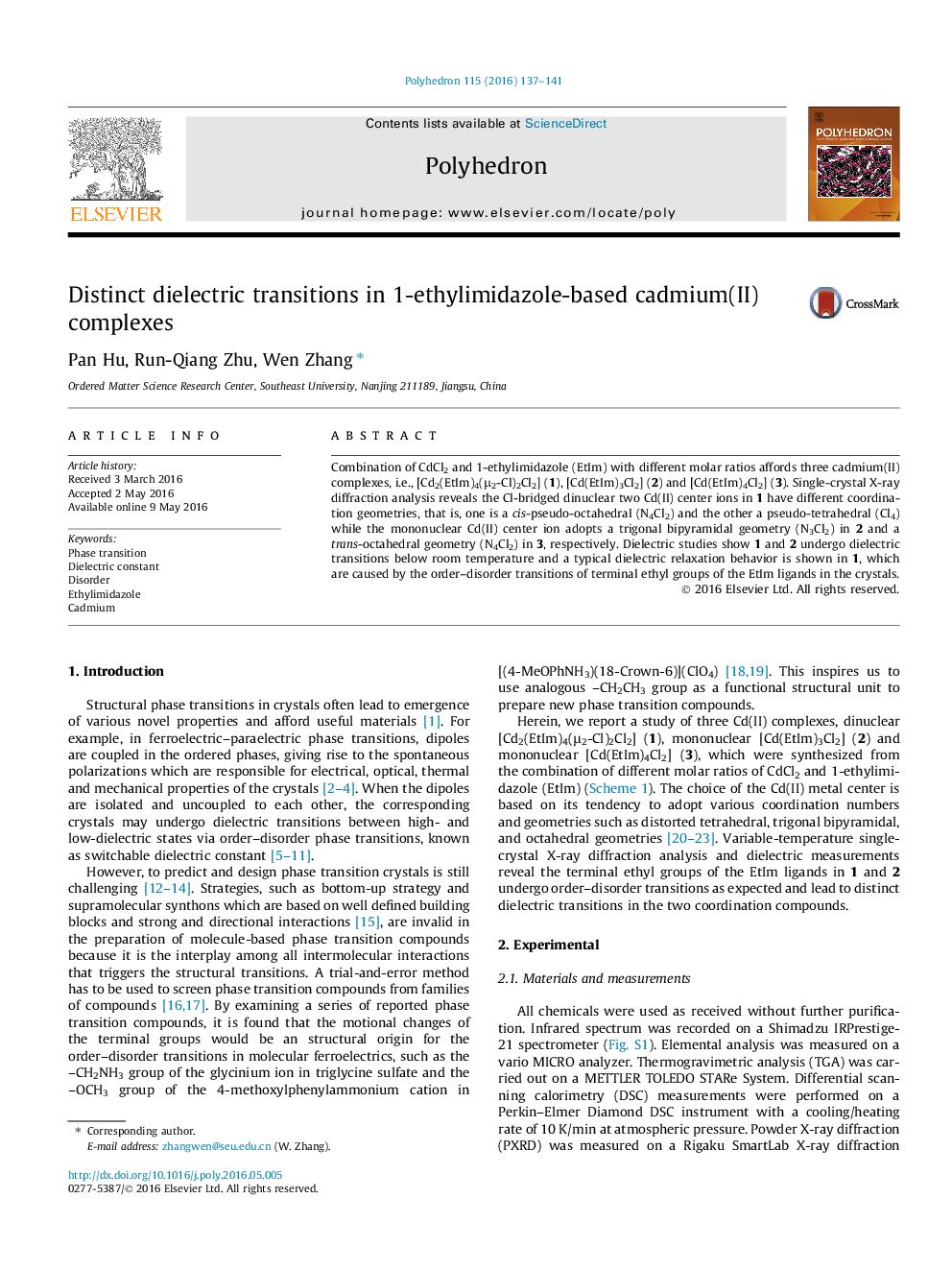| Article ID | Journal | Published Year | Pages | File Type |
|---|---|---|---|---|
| 1336331 | Polyhedron | 2016 | 5 Pages |
Combination of CdCl2 and 1-ethylimidazole (EtIm) with different molar ratios affords three cadmium(II) complexes, i.e., [Cd2(EtIm)4(μ2-Cl)2Cl2] (1), [Cd(EtIm)3Cl2] (2) and [Cd(EtIm)4Cl2] (3). Single-crystal X-ray diffraction analysis reveals the Cl-bridged dinuclear two Cd(II) center ions in 1 have different coordination geometries, that is, one is a cis-pseudo-octahedral (N4Cl2) and the other a pseudo-tetrahedral (Cl4) while the mononuclear Cd(II) center ion adopts a trigonal bipyramidal geometry (N3Cl2) in 2 and a trans-octahedral geometry (N4Cl2) in 3, respectively. Dielectric studies show 1 and 2 undergo dielectric transitions below room temperature and a typical dielectric relaxation behavior is shown in 1, which are caused by the order–disorder transitions of terminal ethyl groups of the EtIm ligands in the crystals.
Graphical abstractThree cadmium(II) complexes were synthesized from a combination of CdCl2 and 1-ethylimidazole in different molar ratios. They show distinct dielectric behaviors because of the different states of the terminal ethyl groups of the ligands in the crystals.Figure optionsDownload full-size imageDownload as PowerPoint slide
